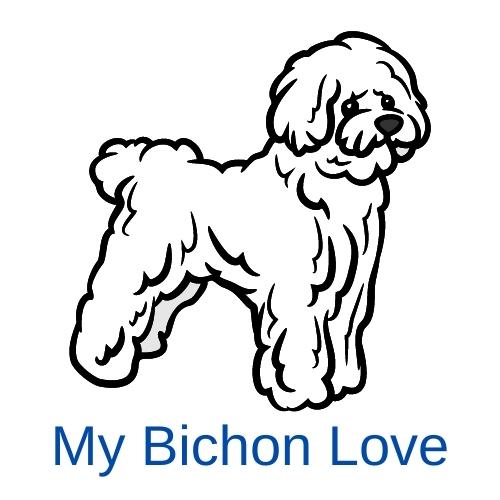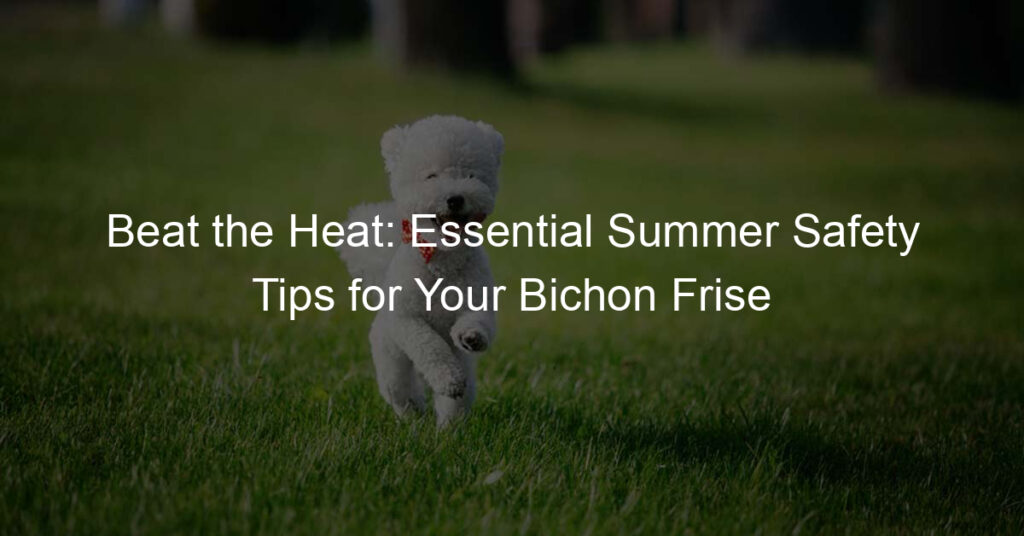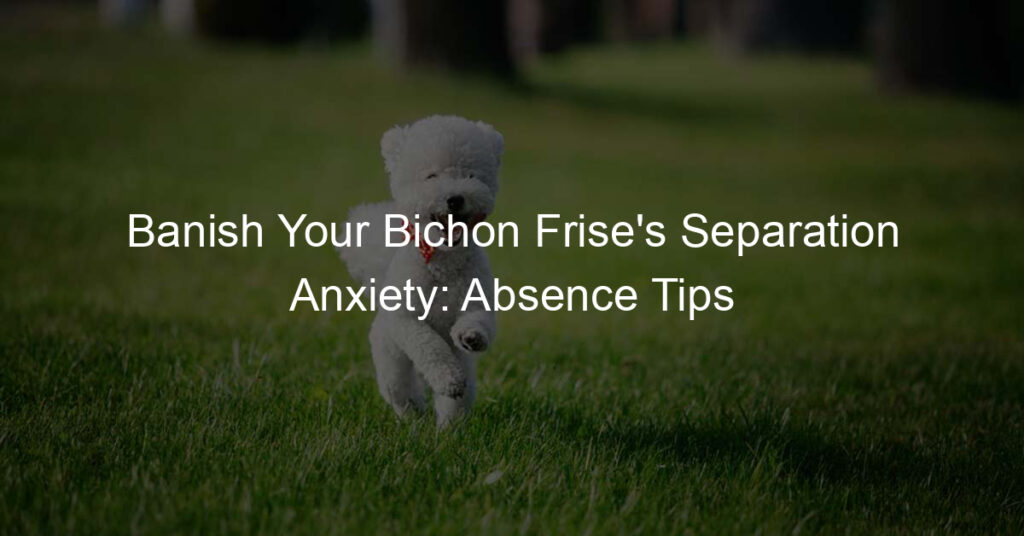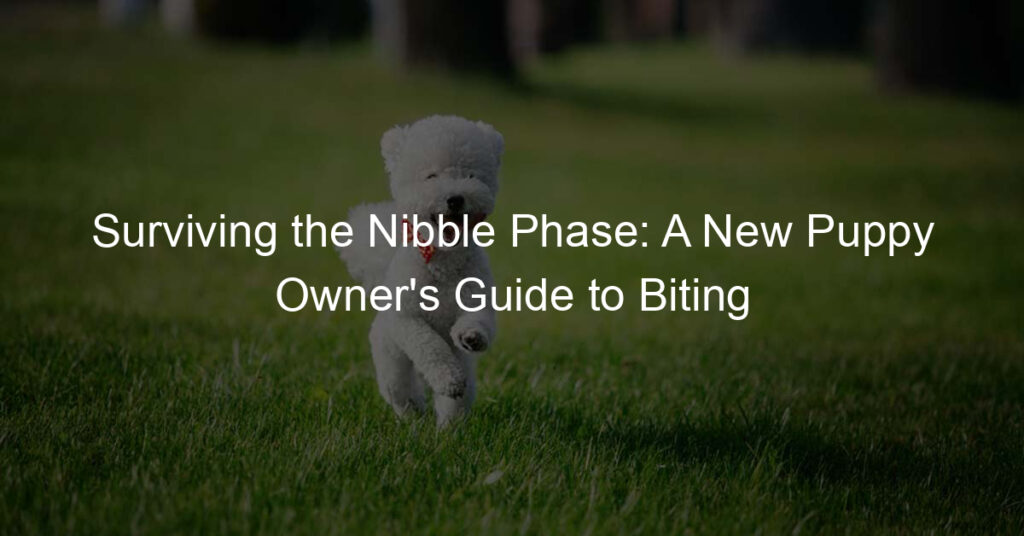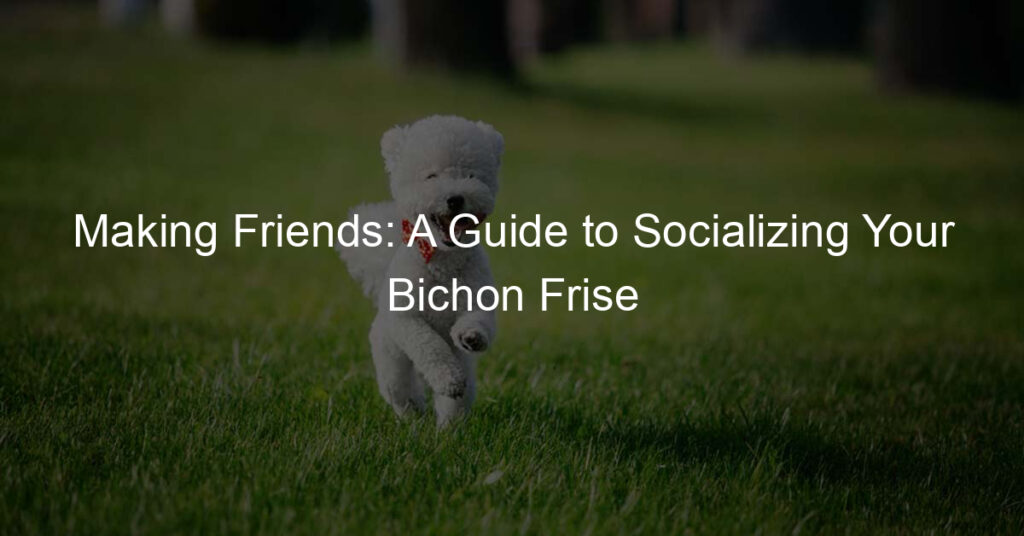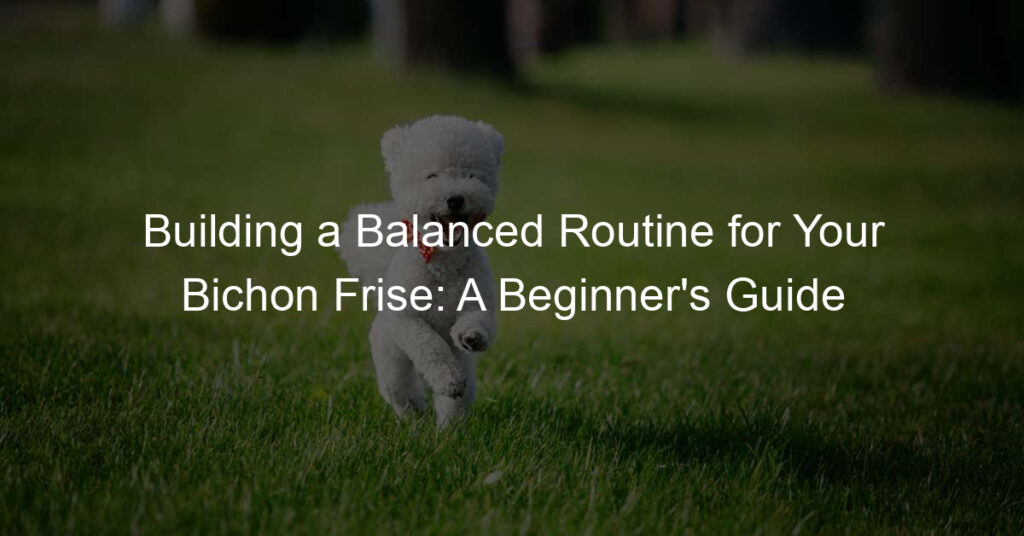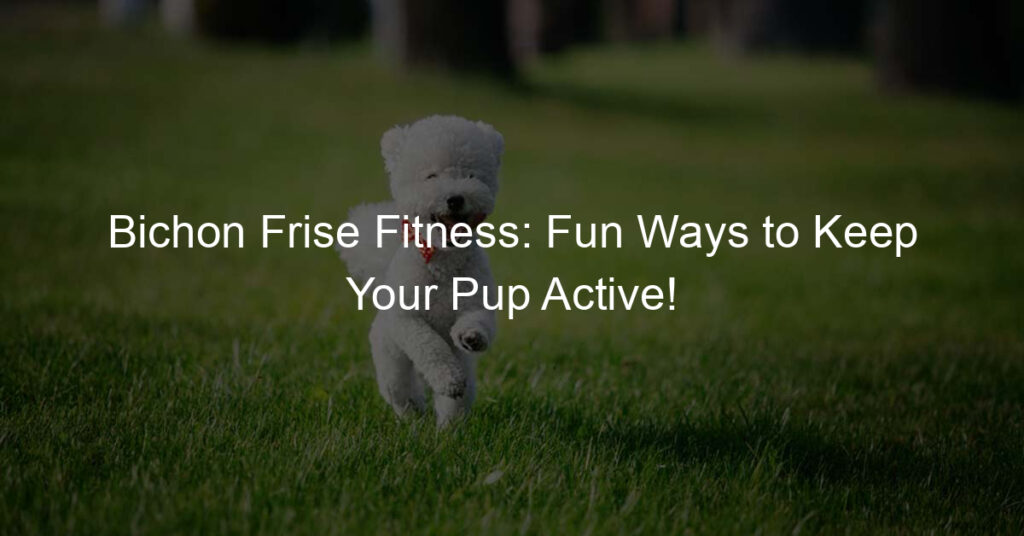Introduction: Importance of Bichon Frise Safety at Home
As a Bichon Frise owner, it’s essential to understand that your home is not just a living space for you, but also for your furry friend. Ensuring the safety of your Bichon Frise at home is a crucial aspect of pet ownership. This article will delve into the importance of a safe home environment for your Bichon Frise and highlight some common hazards that may pose a risk to your beloved pet.
- Understanding the importance of a safe home environment for your Bichon Frise
- Common hazards in the home for Bichon Frise
Your Bichon Frise is a part of your family, and just like any other family member, their safety is paramount. A safe home environment for your Bichon Frise not only ensures their physical well-being, but also contributes to their mental health. A pet-friendly and safe home can help reduce anxiety and stress levels in your Bichon Frise, leading to a happier and healthier pet.
Despite their small size, Bichon Frises are curious and active dogs. This can sometimes lead them into dangerous situations at home. Common hazards include toxic plants, cleaning chemicals, small objects that can be swallowed, and open windows or doors from which they can escape. It’s important to be aware of these hazards and take necessary precautions to ensure your Bichon Frise’s safety.
By understanding the importance of a safe home environment and being aware of common hazards, you can create a home that’s not only comfortable for your Bichon Frise, but also safe. In the following sections, we will provide you with practical tips on how to dog-proof your home, ensure safety in outdoor spaces, and prepare for emergencies.
Section 1: Dog-Proofing Home Tips for Bichon Frise Owners
Ensuring the safety of your Bichon Frise at home is crucial for their well-being. One of the most important areas to focus on is the kitchen. Here are some tips to help you make your kitchen a safe space for your Bichon Frise.
Subsection 1.1: Kitchen Safety
The kitchen can be a dangerous place for your Bichon Frise if not properly secured. Here are some steps you can take to make your kitchen safer for your furry friend.
- Securing Trash Cans
- Storing Food Properly
- Safe Kitchen Appliances
Trash cans can contain harmful substances for your Bichon Frise. Ensure that your trash cans have a secure lid and are placed in an area that your pet cannot easily access. This will prevent them from ingesting harmful substances.
Food items, especially those containing chocolate or other ingredients toxic to dogs, should be stored out of reach. Use high shelves or locked cabinets to store food securely. This will prevent your Bichon Frise from accidentally ingesting harmful foods.
Ensure that all kitchen appliances are safely stored when not in use. Keep cords out of reach to prevent your Bichon Frise from chewing on them. Also, make sure that hot appliances like ovens and stoves are always supervised when in use.
By following these tips, you can create a safe and comfortable environment for your Bichon Frise in the kitchen. Remember, the safety of your pet should always be a priority.
Subsection 1.2: Living Room Safety
Ensuring that your living room is safe for your Bichon Frise is crucial. This is where your pet will likely spend a significant amount of time, so it’s important to make it as safe as possible. Here are some tips to help you create a safe environment for your Bichon Frise in your living room:
- Securing Electrical Cords
- Safe Furniture Choices
Electrical cords can pose a significant risk to your Bichon Frise. They may be tempted to chew on them, which can lead to electric shocks. To prevent this, ensure all electrical cords are out of reach or covered with a pet-proof cover. Electrical injuries can be severe, so it’s essential to take this step in dog-proofing your home.
When choosing furniture for your living room, consider your Bichon Frise. Avoid furniture with sharp edges or corners, as these can cause injury. Opt for furniture made of materials that are easy to clean and resistant to scratching. Also, consider the height of your furniture. Bichon Frises are small dogs and can injure themselves by jumping off high furniture. A dog ramp can be a helpful addition to your living room to help your Bichon safely get on and off the furniture.
By following these tips, you can help ensure that your living room is a safe and enjoyable space for your Bichon Frise. Remember, a safe pet is a happy pet!
Section 2: Bichon Frise Home Safety in Outdoor Spaces
Ensuring your Bichon Frise’s safety doesn’t stop at the door. Outdoor spaces, such as your garden, can pose potential risks to your fluffy friend. Let’s explore how to make these areas safer for your Bichon Frise.
Subsection 2.1: Garden Safety
Creating a safe garden environment for your Bichon Frise involves understanding plant toxicity and choosing safe fencing options. Let’s delve into these aspects.
- Plant toxicity and Bichon Frise
- Safe fencing options
Many common garden plants can be toxic to dogs, including Bichon Frise. For example, azaleas, lilies, and daffodils can cause serious health problems if ingested by your pet. Always check the list of poisonous plants before adding any new plants to your garden. If you suspect your Bichon Frise has ingested a toxic plant, contact your vet immediately.
Safe fencing is crucial to prevent your Bichon Frise from wandering off and getting lost or injured. A fence should be high enough that your Bichon Frise can’t jump over it, and without gaps where they could squeeze through. Consider options like wooden, vinyl, or chain-link fences. Remember, the goal is to keep your pet safe, not to restrict their freedom.
In conclusion, garden safety for your Bichon Frise involves being aware of potential plant toxicity and ensuring a secure fencing system. By taking these steps, you can create a safe and enjoyable outdoor space for your pet.
Subsection 2.2: Pool Safety
Ensuring pool safety is crucial when you have a Bichon Frise at home. These adorable dogs are known for their playful nature, but they can sometimes get into dangerous situations around water bodies. Here, we will discuss two key aspects of pool safety for your Bichon Frise.
- Pool Covers and Bichon Frise Safety
- Teaching Your Bichon Frise to Swim
Pool covers are an essential safety measure for any home with a pool and a Bichon Frise. They prevent your pet from accidentally falling into the pool when it’s not in use. According to a Wikipedia article on dog safety, pool covers have been found to significantly reduce the risk of drowning in pets. However, not all pool covers are created equal. It’s important to choose one that is sturdy and can withstand the weight of your Bichon Frise. A weak or flimsy cover can collapse under your pet’s weight, leading to a dangerous situation.
While Bichon Frises are not natural swimmers, they can be taught to swim for their safety. Start by introducing your pet to shallow water and gradually increase the depth as they become more comfortable. Always supervise your Bichon Frise during swimming lessons and never force them into the water if they seem scared or uncomfortable. Remember, the goal is to make them feel safe around water, not to turn them into expert swimmers.
In conclusion, pool safety is a serious matter that all Bichon Frise owners should take into account. By investing in a sturdy pool cover and teaching your pet to swim, you can significantly reduce the risk of water-related accidents. Remember, your Bichon Frise’s safety is always worth the effort.
Section 3: Protecting Bichon Frise at Home: Emergency Preparedness
Ensuring the safety of your Bichon Frise at home involves more than just dog-proofing your house and yard. It also means being prepared for emergencies. In this section, we will focus on fire safety.
Subsection 3.1: Fire Safety
Fire safety is a critical aspect of home safety for every pet owner. Here are some ways to ensure your Bichon Frise’s safety in case of a fire.
- Smoke detectors and pet safety
- Creating a fire evacuation plan with your Bichon Frise in mind
- Identify all possible exits from your home.
- Train your Bichon Frise to come to you when called.
- Keep a leash near the exit to quickly secure your pet.
- Practice the plan regularly so your Bichon Frise gets used to the routine.
Smoke detectors are essential for every home, but they are especially important for homes with pets. Smoke detectors can alert you to a fire before it gets out of control, giving you time to get your Bichon Frise to safety. According to the National Fire Protection Association, homes with working smoke detectors cut the risk of dying in a fire in half. Make sure to test your smoke detectors monthly and replace the batteries at least once a year.
Having a fire evacuation plan is crucial, and it’s even more important to include your Bichon Frise in this plan. When creating your plan, consider the following:
Remember, your Bichon Frise depends on you for their safety. By taking these steps, you can ensure that you are prepared to protect your pet in case of a fire.
Subsection 3.2: Natural Disaster Preparedness
When it comes to your Bichon Frise’s safety, it’s crucial to be prepared for all types of emergencies, including natural disasters. This section will guide you through the necessary steps to ensure your pet’s safety during these unpredictable events.
- Preparing a Pet Emergency Kit
- At least a three-day supply of food and water.
- Medications and medical records stored in a waterproof container.
- A first aid kit with pet-specific supplies.
- Current photos and descriptions of your pet in case they get lost.
- Information on feeding schedules, medical conditions, and behavior issues in case you need to board your pet.
- Comfort items like a toy or blanket to help reduce stress.
- Safe Spaces During a Natural Disaster
- Indoor Safety: Choose a small, windowless, interior room on the ground floor where you and your pet can take shelter. Bathrooms often work well for this purpose.
- Evacuation: If you need to evacuate, take your pet with you. Never leave them behind as they could be lost or injured.
- Pet-Friendly Shelters: Research pet-friendly shelters and hotels in advance so you know where you can take your Bichon Frise if you need to leave your home.
Just like humans, pets also need an emergency kit that can be grabbed quickly in case of a sudden evacuation. Here’s what you should include in your Bichon Frise’s emergency kit:
Remember, the key to survival during a disaster is preparation. Make sure to check and update the kit regularly to ensure everything is in order and up-to-date.
During a natural disaster, it’s essential to know where to take your Bichon Frise to keep them safe. Here are some tips:
Remember, your pet’s safety depends on you. By planning ahead and being prepared, you can help ensure your Bichon Frise’s safety during a natural disaster.
Conclusion: Bichon Frise Proofing Your House for a Safe and Happy Pet
As we reach the end of our comprehensive guide on ensuring a safe and happy environment for your Bichon Frise, let’s take a moment to recap the key safety measures and emphasize the importance of regular safety checks.
- Recap of key safety measures for Bichon Frise:
- Importance of regular safety checks:
Ensuring the safety of your Bichon Frise involves a combination of indoor and outdoor measures. Indoors, you should remove potential hazards such as toxic plants and small objects that can be swallowed. Secure all cabinets and doors, especially those containing chemicals or medications. Outdoors, ensure your yard is securely fenced, and keep your pet away from pools or ponds without supervision. Also, remember to prepare for emergencies by having a pet first aid kit and emergency contact numbers readily available. Learn more about Bichon Frise here.
Regular safety checks are crucial in maintaining a safe environment for your Bichon Frise. These checks should include inspecting your home for new potential hazards, checking the integrity of fences and gates, and ensuring all harmful substances are out of your pet’s reach. Regular checks not only help prevent accidents but also ensure that you are prepared in case of an emergency.
In conclusion, the safety of your Bichon Frise should be a top priority. By following these guidelines, you can create a safe and comfortable environment for your beloved pet. Remember, a safe Bichon Frise is a happy Bichon Frise!
